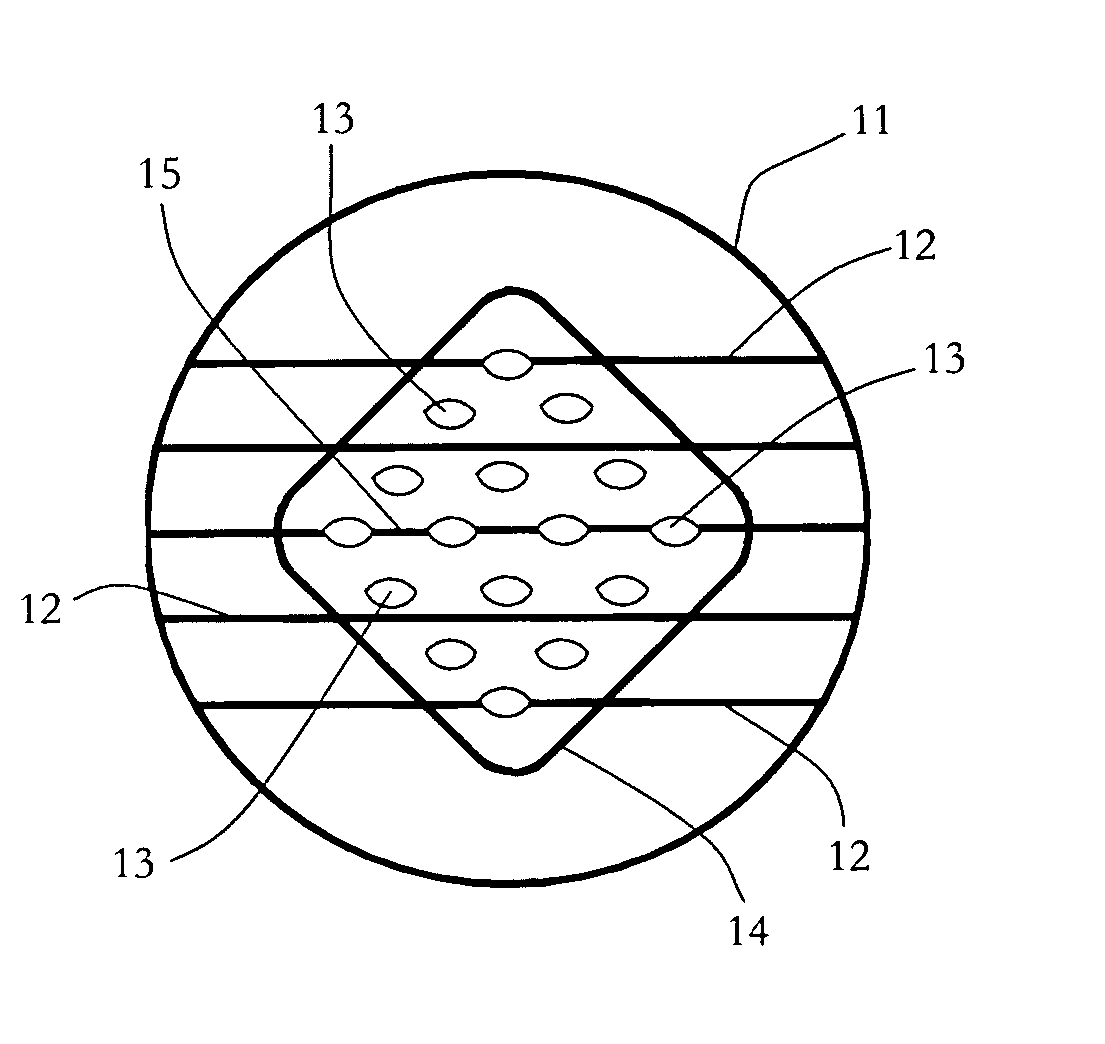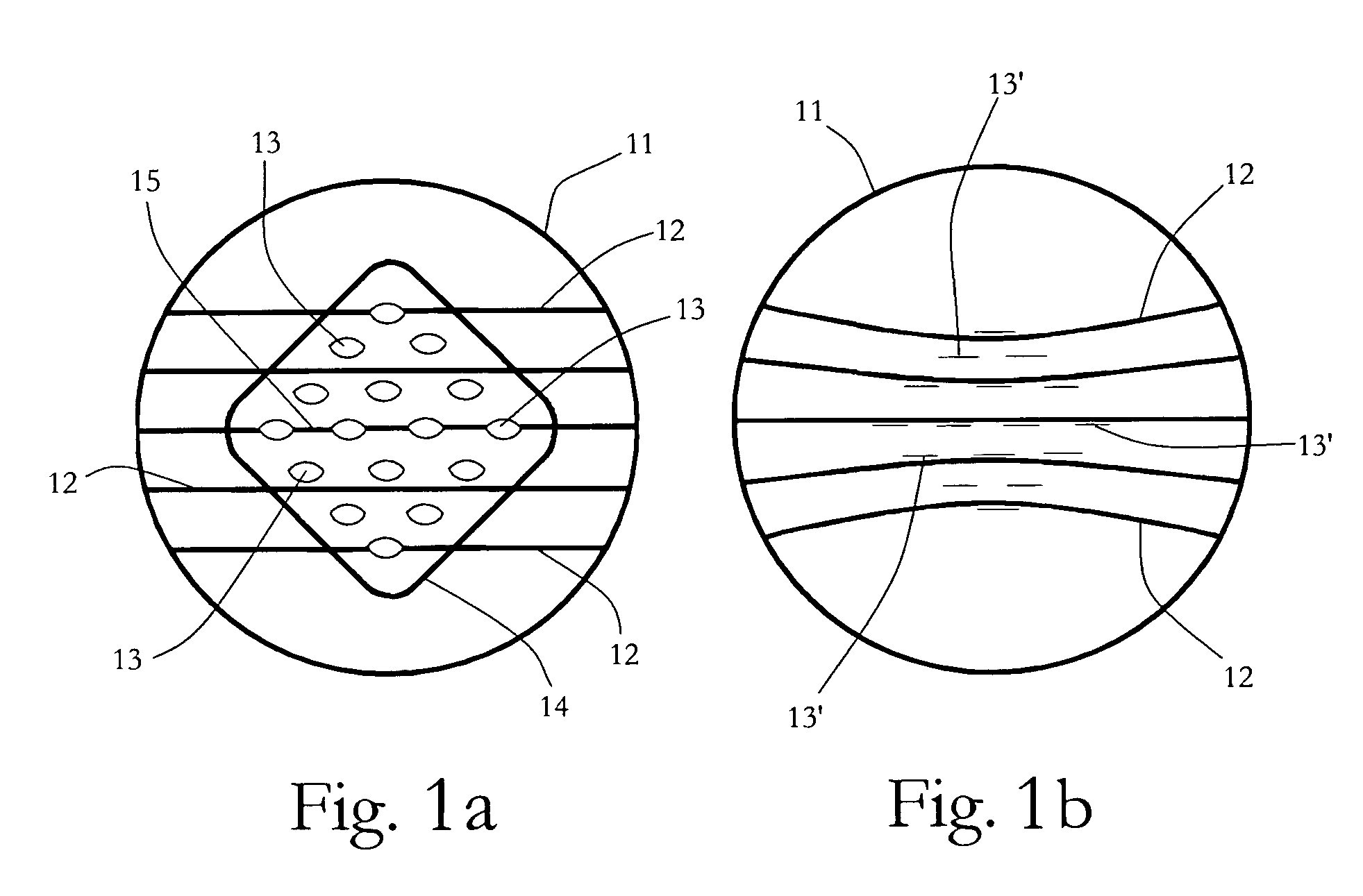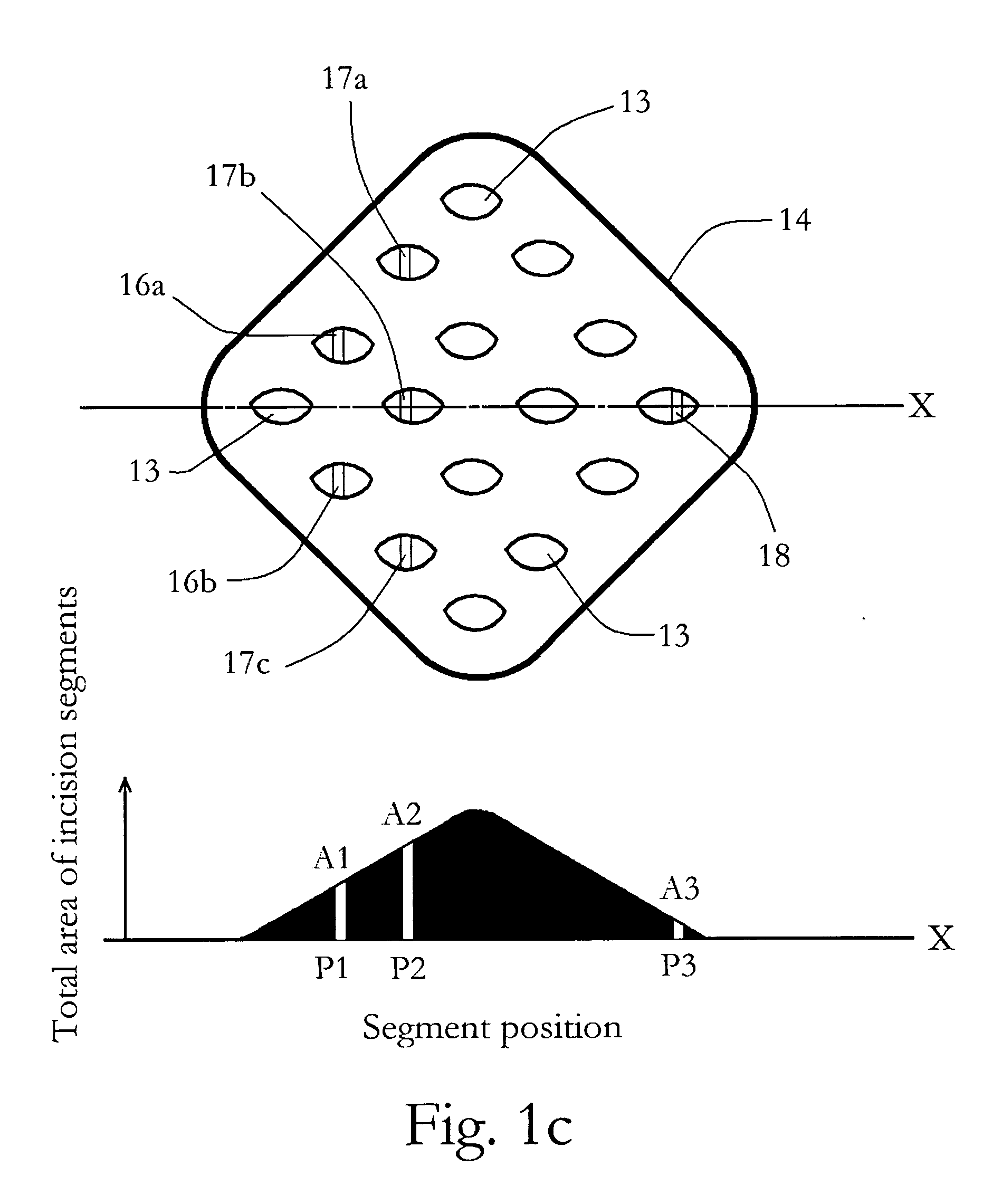Method and apparatus for skin reduction
a skin reduction and surgical technology, applied in the field of surgical instruments and methods for skin reduction or tightening, can solve the problems of tightening the skin at the treated site, more skin stretching, and more skin tightening in surgery, and achieves small hairline scarring, small navicular or other shaped incisions, and visible scarring
- Summary
- Abstract
- Description
- Claims
- Application Information
AI Technical Summary
Benefits of technology
Problems solved by technology
Method used
Image
Examples
Embodiment Construction
[0031] The present invention will be described in detail below with the preferred embodiments, in which similar reference numbers designate similar elements throughout the drawings.
[0032]FIG. 1a is a plan view representation of a circular section 11 of skin with parallel prereduction orientation lines 12 and an array of excised navicular incisions 13 of skin prior to closure. The array of incisions 13 of skin collectively form a patch 14 that is to be tightened or treated. FIG. 1b is a plan view representation of the circular section 11 shown in FIG. 1a after closure of the incisions 13 of skin. The closures of incisions 13 are shown as short lines 13′ in FIG. 1b, which are usually unnoticeable when the incisions 13 are very small.
[0033] Preferably, according to the teaching of the present invention, the array of incisions 13 are arranged according to an “area rule” wherein the total area of incision segments taken in a direction perpendicular to an axis 15 of the patch 14 changes...
PUM
 Login to View More
Login to View More Abstract
Description
Claims
Application Information
 Login to View More
Login to View More - R&D
- Intellectual Property
- Life Sciences
- Materials
- Tech Scout
- Unparalleled Data Quality
- Higher Quality Content
- 60% Fewer Hallucinations
Browse by: Latest US Patents, China's latest patents, Technical Efficacy Thesaurus, Application Domain, Technology Topic, Popular Technical Reports.
© 2025 PatSnap. All rights reserved.Legal|Privacy policy|Modern Slavery Act Transparency Statement|Sitemap|About US| Contact US: help@patsnap.com



